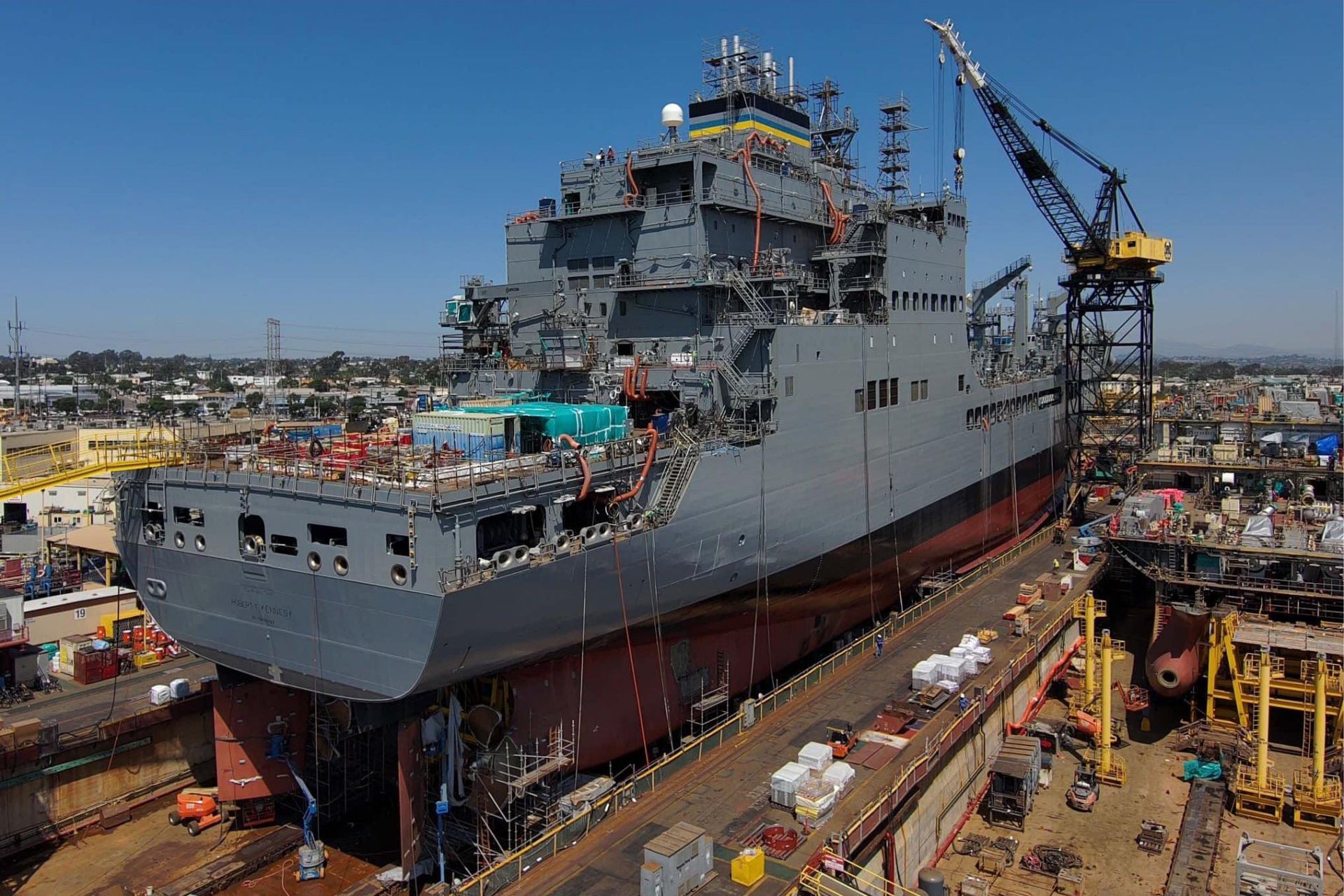Breaking News
US Navy signs deal with NASSCO for John Lewis-class Fleet replenishment oilers.
According to information published by the US DoD on September 13, 2024, the U.S. Navy has awarded a $6.75 billion block buy contract to General Dynamics NASSCO for the construction of up to eight John Lewis Class (T-AO 205) Fleet Replenishment oilers.
Follow Army Recognition on Google News at this link

Navy's John lewis-class replenishment oiler USNS Robert F. Kennedy. (Picture source: US DoD)
Recognizing the need to replace the aging Henry J. Kaiser-class oilers from the 1980s, the U.S. Navy initiated the T-AO 205 program. This program aims to enhance logistical support capabilities by commissioning a new class of oilers equipped with modern technology. In 2016, General Dynamics National Steel and Shipbuilding Company (NASSCO) was awarded the contract to design and construct the first ships of the class. The overall plan includes building up to 20 ships to meet the Navy's long-term logistical requirements.
The John Lewis-class ships have a full load displacement of approximately 49,850 tons and measure 746 feet (227 meters) in length with a beam of 106 feet (32 meters). They are capable of speeds over 20 knots and are powered by a diesel-electric propulsion system, which offers improved fuel economy and reduced emissions compared to older models. Manned by civilian crews under the Military Sealift Command, these ships are integral to naval logistics.
Equipped with a fuel capacity of up to 156,000 barrels, including jet fuel and marine diesel, they feature a consolidated cargo-handling system for efficient transfer of supplies. Multiple underway replenishment stations on both sides of the ship allow for simultaneous refueling and resupply operations. The double-hull design not only meets environmental regulations but also enhances safety by preventing oil spills.
The primary mission of the John Lewis-class oilers is to provide logistical support during underway replenishment operations. By delivering fuel, lubricants, and dry cargo, these ships enable combat vessels to remain at sea for extended periods without the need to return to port. They are designed to refuel and resupply ships while both vessels are in motion, enhancing operational flexibility. Additionally, they can support allied vessels during combined operations, contributing to joint mission readiness and sustainability.


























